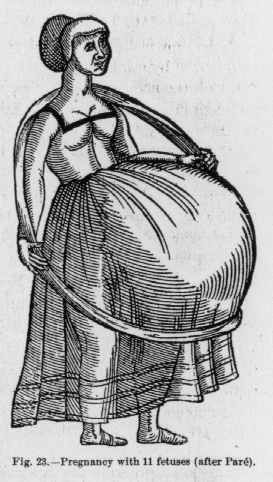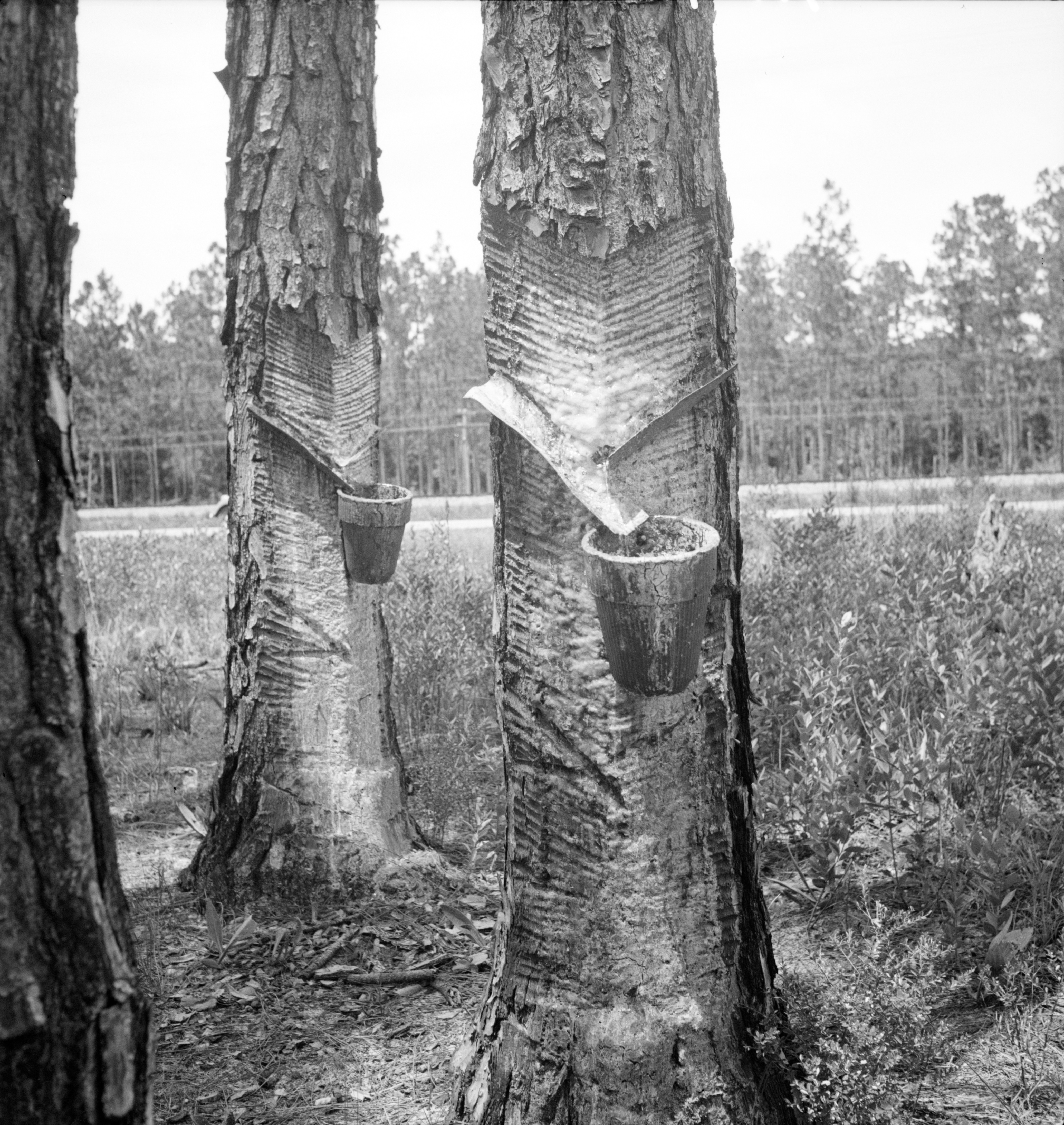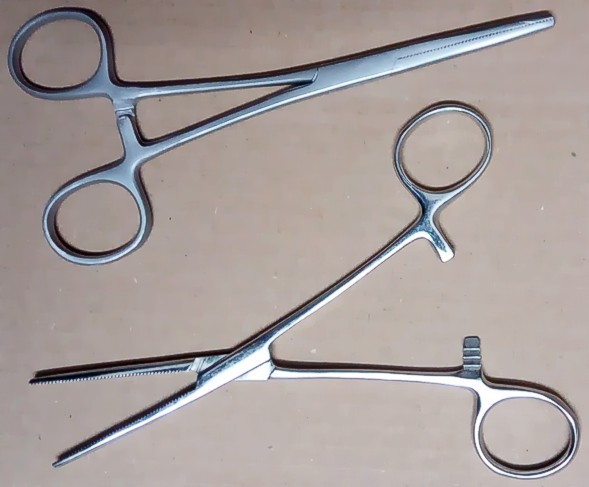|
Ambroise Paré
Ambroise Paré (; – 20 December 1590) was a French barber surgeon who served in that role for kings Henry II, Francis II, Charles IX and Henry III. He is considered one of the fathers of surgery and modern forensic pathology and a pioneer in surgical techniques and battlefield medicine, especially in the treatment of wounds. He was also an anatomist, invented several surgical instruments, and was a member of the Parisian barber surgeon guild. In his personal notes about the care he delivered to Captain Rat, in the Piémont campaign (1537–1538), Paré wrote: ''Je le pansai, Dieu le guérit'' ("I bandaged him and God healed him"). This epitomises a philosophy that he used throughout his career. These words, inscribed on his statue in Laval, are reminiscent of the Latin adage '' medicus curat, natura sanat'', "The physician cures, nature heals". Early life Paré was born in 1510 in Bourg-Hersent, later incorporated into Laval, then part of the province of Maine, in nor ... [...More Info...] [...Related Items...] OR: [Wikipedia] [Google] [Baidu] |
William Holl
William Holl the Younger (February 1807 in Plaistow, Essex – 30 January 1871) was a British portrait and figure engraver, noted for his book illustrations. Life The eldest of four sons of William Holl the Elder (1771–1838), he was taught engraving by his father – at first stipple and later line on steel. The first portrait engraving produced on his own was that of Thomas Cranmer in May 1829 for inclusion in Edmund Lodge's ''Portraits of Illustrious Personages''. He contributed further work to this publication between 1829 and 1835 after artists such as van Loo, Holbein, Van Dyck, Lely, Godfrey Kneller and Daniel Mytens. He was a founder member of the ''Chalcographic Society'' started by several notable engravers in 1830. Holl also produced portraits for William Jerdan's ''National Portrait Gallery'' (1830–34) and for the 1834 ''Chambers's Biographical Dictionary of Eminent Scotsmen''. Working with his brother Francis Holl (1815–84), he provided engr ... [...More Info...] [...Related Items...] OR: [Wikipedia] [Google] [Baidu] |
Turpentine
Turpentine (which is also called spirit of turpentine, oil of turpentine, terebenthine, terebenthene, terebinthine and, colloquially, turps) is a fluid obtainable by the distillation of resin harvested from living trees, mainly pines. Principally used as a specialized solvent, it is also a source of material for Organic synthesis, organic syntheses. Turpentine is composed of terpenes, primarily the monoterpenes alpha-Pinene, alpha- and beta-Pinene, beta-pinene, with lesser amounts of carene, camphene, limonene, and terpinolene.Kent, James A. ''Riegel's Handbook of Industrial Chemistry'' (Eighth Edition) Van Nostrand Reinhold Company (1983) p.569 Nowadays, turpentine is rarely the product of distillation of pine resin, but is a byproduct of pulping. Pulping is achieved by two processes, the Kraft process and the sulfite process. The turpentines obtained from these two processes differ in their chemical compositions. The sulfite process gives a product that is rich in cymene, w ... [...More Info...] [...Related Items...] OR: [Wikipedia] [Google] [Baidu] |
Podalic Version
Podalic version is an obstetric procedure wherein the fetus is turned within the womb such that one or both feet present through the cervix during childbirth. It is used most often in cases where the fetus lies transversely or in another abnormal position in the womb. In modern medicine, abnormal lies are increasingly delivered via Caesarean section. According to Gabbe, "There is no place for internal podalic version and breech extraction in the management of transverse or oblique lie or unstable presentation in singleton pregnancies because of the unacceptably high rate of fetal and maternal complications." Podalic version has a long history spanning back to Hippocrates. It fell out of favor over the centuries until revived by Ambroise Paré Ambroise Paré (; – 20 December 1590) was a French barber surgeon who served in that role for kings Henry II, Francis II, Charles IX and Henry III. He is considered one of the fathers of surgery and modern forensic pathology an ... [...More Info...] [...Related Items...] OR: [Wikipedia] [Google] [Baidu] |
Obstetrics
Obstetrics is the field of study concentrated on pregnancy, childbirth and the postpartum period. As a medical specialty, obstetrics is combined with gynecology under the discipline known as obstetrics and gynecology (OB/GYN), which is a surgical field. Main areas Prenatal care Prenatal care is important in screening for various complications of pregnancy. This includes routine office visits with physical exams and routine lab tests along with telehealth care for women with low-risk pregnancies: Image:Ultrasound_image_of_a_fetus.jpg, 3D ultrasound of fetus (about 14 weeks gestational age) Image:Sucking his thumb and waving.jpg, Fetus at 17 weeks Image:3dultrasound 20 weeks.jpg, Fetus at 20 weeks First trimester Routine tests in the first trimester of pregnancy generally include: * Complete blood count * Blood type ** Rh-negative antenatal patients should receive RhoGAM at 28 weeks to prevent Rh disease. * Indirect Coombs test (AGT) to assess risk of hem ... [...More Info...] [...Related Items...] OR: [Wikipedia] [Google] [Baidu] |
Charles De Cossé, Count Of Brissac
Charles de Cossé, Count of Brissac (1505 ( O.S.)/06 – 1563), was a French courtier and soldier, named ''beau Brissac'' at court and remembered as the ''Maréchal Brissac''. A member of the nobility of Anjou, he was appointed in 1540 to his father's prestigious former post of Grand Falconer of France, one of the Great Officers of the Maison du Roi. This was not purely honorary, as the king still hunted with falcons. Brissac was also ''Grand Panetier'', and his position as colonel general of the cavalry (1548–49) was a court appointment. Raised to Marshal of France in 1550, he was Grand Master of the Artillery. He was eventually given the title of Count of Brissac. His son, Charles II de Cossé, became the first Duke of Brissac. Early life and family The son of René de Cossé, seigneur of Brissac and of Cossé in Anjou, ''grand fauconnier du Roi'', and of his wife Charlotte Gouffier de Boisy, he was an ''enfant d'honneur'' in the household of the dauphin François, so ... [...More Info...] [...Related Items...] OR: [Wikipedia] [Google] [Baidu] |
Siege Of Perpignan (1542)
The siege of Perpignan took place in 1542, at Perpignan, between a larger French army commanded by Henry, Dauphin of France and the Spanish garrison at Perpignan. The Spaniards resisted until the arrival of the Spanish army under Don Fernando Álvarez de Toledo, Duke of Alba, causing the withdrawal of the French army. The siege was one of the costliest defeats of Francis I of France in the French offensive of 1542. French offensive of 1542 In June, 1541, Francis I of France, allied with the United Duchies of Jülich-Cleves-Berg, the Ottoman Empire, Denmark, and Sweden, made a show of the power at his disposal, by arriving with five armies.Lafuente p.208Lafuente p.209 Francis declared war on 12 July 1542, and the French immediately launched an offensive against Charles V with these armies.Knecht p.480 One of them, commanded by his son Charles, Duke of Orléans went to Luxembourg. Another, led by Francis's eldest son, Henry, Dauphin of France, marched to Roussillon towards the ... [...More Info...] [...Related Items...] OR: [Wikipedia] [Google] [Baidu] |
Phantom Pain
Phantom pain is a Pain, painful perception that an individual experiences relating to a Limb (anatomy), limb or an Organ (biology), organ that is not physically part of the body, either because it was amputation, removed or was never there in the first place. Sensations are reported most frequently following the amputation of a limb, but may also occur following the removal of a breast, tongue, or internal organ. Phantom eye syndrome can occur after eye loss. The pain sensation and its duration and frequency varies from individual to individual. Phantom pain should be distinguished from other conditions that may present similarly, such as phantom limb sensation and residual limb pain. Phantom limb sensation is any sensory phenomenon, except pain, which is felt at an absent limb or a portion of the limb. It is estimated that up to 80% of amputees experience phantom limb sensations at some time of their lives. Some experience some level of this phantom feeling in the missing limb f ... [...More Info...] [...Related Items...] OR: [Wikipedia] [Google] [Baidu] |
Haemostat
A hemostat (also called a hemostatic clamp; arterial forceps; and pean, after Jules-Émile Péan) is a tool used to control bleeding during surgery. Similar in design to both pliers and scissors, it is used to clamp exposed blood vessels shut. Hemostats belong to a group of instruments that pivot (similar to scissors, and including needle holders, tissue holders, and some other clamps) where the structure of the tip determines the tool's function. A hemostat has handles that can be held in place by their locking mechanism, which usually is a series of interlocking teeth, a few on each handle, that allow the user to adjust the clamping force of the pliers. When the tips are locked together, the force between them is about 40 N (9 lbf). Often in the first phases of surgery, the incision is lined with hemostats on blood vessels that are awaiting ligation. History The earliest known drawing of a pivoting surgical instrument dates from 1500 B.C. and is on a tomb at Thebes, Egyp ... [...More Info...] [...Related Items...] OR: [Wikipedia] [Google] [Baidu] |
Amputation
Amputation is the removal of a Limb (anatomy), limb or other body part by Physical trauma, trauma, medical illness, or surgery. As a surgical measure, it is used to control pain or a disease process in the affected limb, such as cancer, malignancy or gangrene. In some cases, it is carried out on individuals as a Preventive healthcare, preventive surgery for such problems. A special case is that of congenital amputation, a congenital disorder, where fetus, fetal limbs have been cut off by constrictive bands. In some countries, judicial amputation is currently used punishment, to punish people who commit crimes. Amputation has also been used as a tactic in war and acts of terrorism; it may also occur as a war injury. In some cultures and religions, minor amputations or mutilations are considered a ritual accomplishment. When done by a person, the person executing the amputation is an amputator. The oldest evidence of this practice comes from a skeleton found buried in Liang Tebo c ... [...More Info...] [...Related Items...] OR: [Wikipedia] [Google] [Baidu] |
Cauterization
Cauterization (or cauterisation, or cautery) is a medical practice or technique of burning a part of a body to remove or close off a part of it. It destroys some tissue in an attempt to mitigate bleeding and damage, remove an undesired growth, or minimize other potential medical harm, such as infections when antibiotics are unavailable. The practice was once widespread for treatment of wounds. Its utility before the advent of antibiotics was said to be effective at more than one level: *To prevent exsanguination *To close amputations Cautery was historically believed to prevent infection, but current research shows that cautery actually increases the risk for infection by causing more tissue damage and providing a more hospitable environment for bacterial growth. Actual cautery refers to the metal device, generally heated to a dull red glow, that a physician applies to produce blisters, to stop bleeding of a blood vessel, and for other similar purposes., page 16. The main f ... [...More Info...] [...Related Items...] OR: [Wikipedia] [Google] [Baidu] |
Al-Zahrawi
Abū al-Qāsim Khalaf ibn al-'Abbās al-Zahrāwī al-Ansari (; c. 936–1013), popularly known as al-Zahrawi (), Latinisation of names, Latinised as Albucasis or Abulcasis (from Arabic ''Abū al-Qāsim''), was an Arabs, Arab physician, surgeon and chemist from al-Andalus. He is considered one of the greatest surgeons of the Middle Ages. Al-Zahrawi's principal work is the ''Al-Tasrif, Kitab al-Tasrif'', a thirty-volume encyclopedia of medical practices. The surgery chapter of this work was later translated into Latin, attaining popularity and becoming the standard textbook in Europe for the next five hundred years. Al-Zahrawi's pioneering contributions to the field of surgical procedures and instruments had an enormous impact in the East and West well into the Modern era, modern period, where some of his discoveries are still applied in medicine to this day. He pioneered the use of catgut for internal stitches, and his surgical instruments are still used today to treat peop ... [...More Info...] [...Related Items...] OR: [Wikipedia] [Google] [Baidu] |





